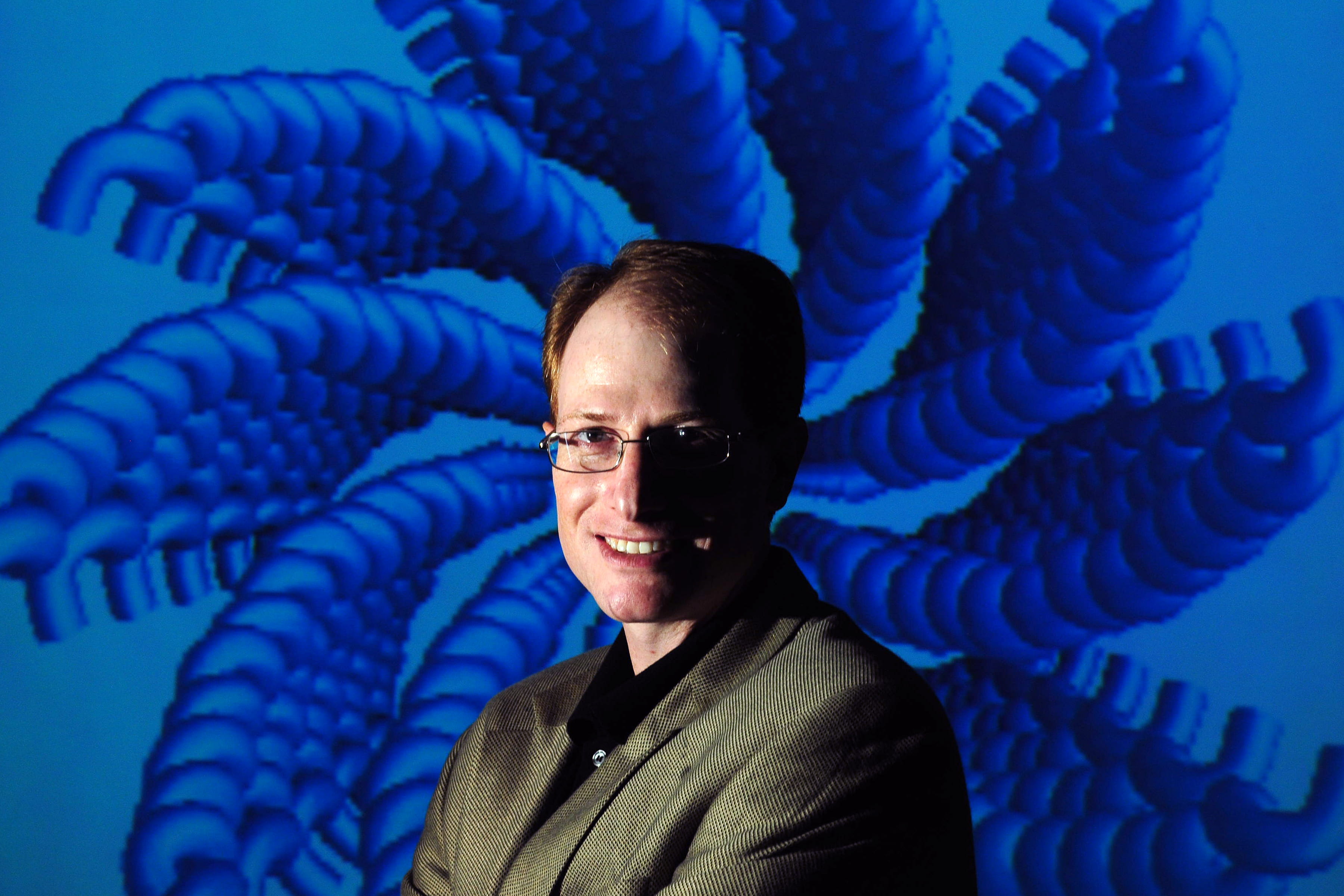Viruses become medical allies
Humans are surrounded by viruses, and most are harmlessly keeping bacteria under control. But some harmful viruses, such as the flu or common cold, can make us sick, while others such as Ebola or HIV can kill us.

Humans are surrounded by viruses, and most are harmlessly keeping bacteria under control. But some harmful viruses, such as the flu or common cold, can make us sick, while others such as Ebola or HIV can kill us.
Viruses also can be valuable medical allies that are used by biotechnology firms to engineer proteins and fight disease. Gregory Weiss, UC Irvine chemistry and molecular biology & biochemistry associate professor, uses viruses to build early detectors for diseases such as prostate and lung cancer.
Weiss will discuss his research during a Discover the Physical Sciences Breakfast Lecture Series talk titled “Putting Viruses to Work,” 7:30-9 a.m. Tuesday, Nov. 18, at the University Club. Below, Weiss answers questions about his research.
Q: Why are you interested in viruses?
A: Viruses are power tools for chemistry. I teach an undergraduate lab, for example, in which the students use viruses to synthesize billions of different molecules, which would be impossible using conventional techniques. These vast collections of molecules attached to viruses (called “libraries”) can be viewed as an enormous number of lottery tickets, each with the potential to solve specific chemical problems, such as targeting a cancer marker.
Q: How do you use viruses in your laboratory?
A: We use viruses in three ways. First, we sift our collections of virus-attached molecules to find molecules that can stick well to cancer markers, which could offer new tools to diagnose diseases. Second, we use the evolution of viruses to reverse engineer fundamental forces holding together proteins inside cells. Third, the tremendous power of viruses to evolve provides a platform for exploring the emergence of drug resistance to anti-HIV therapies.
Q: How are biotechnology firms using viruses?
A: Many biotechnology and pharmaceutical firms use viruses to discover and then hone potential antibody-based pharmaceuticals.
Q: How might the public benefit from this work?
A: The public benefits primarily from training and education carried out in my lab, which supplies the California workplace with talented, high-tech workers to staff and start up new biomedical firms. Additionally, fundamental discoveries uncovered by our research inspire new strategies for anti-cancer and anti-viral therapies. Some already have been licensed and implemented by biomedical companies, which are pursuing ways to lower healthcare costs and improve treatment effectiveness.
Q: What inspires your research?
A: I read a lot of science fiction and often find myself thinking about ways to implement in my lab cool ideas from Ted Sturgeon, Neal Stephenson or Greg Benford. I also find my enjoyment of music and paintings focuses my research, perhaps by driving me to find creative, elegant solutions to complex problems.
Q: What do you like to do in your spare time?
A: Growing up in Los Angeles turned me into a car guy, and my ideal weekend afternoon consists of blasting through twisty canyons with the roof of the car off and my beloved wife in the passenger seat. I’m also perpetually in training for the next triathlon. My latest hobby is carving elaborate cat furniture (think mathematical knots such as Seifert surfaces) out of cardboard.